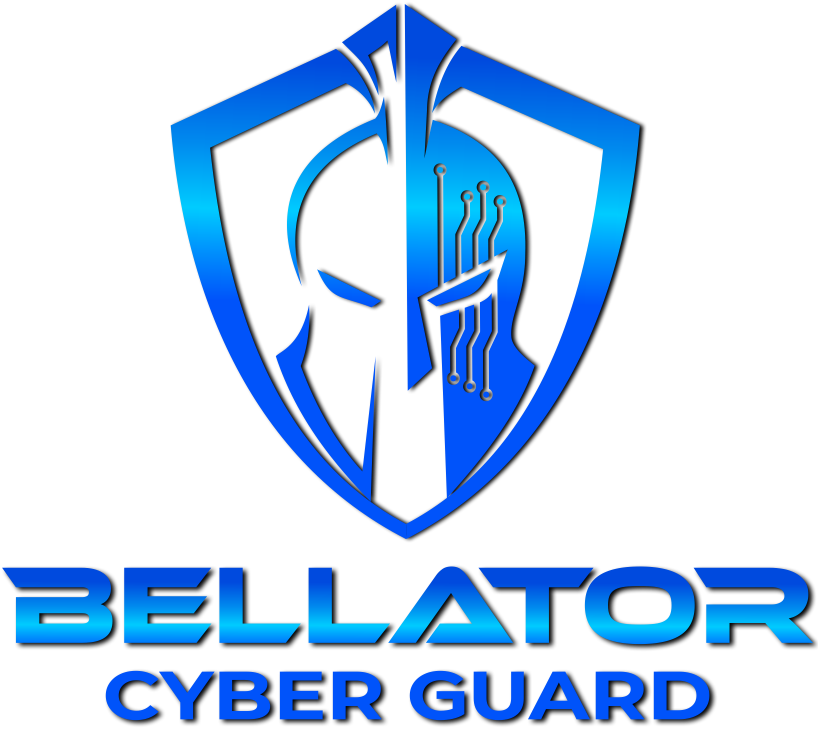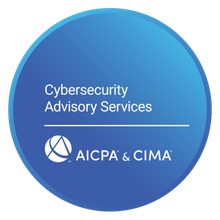Asset Management and Vulnerability Management
Asset management is a crucial process that involves the management and tracking of all the hardware and software assets of an organization. It enables organizations to have better visibility and control over their IT infrastructure, reduce costs, and improve security.
One of the primary benefits of asset management is its ability to provide organizations with a comprehensive overview of their IT assets. By using asset management tools such as RMM solutions, organizations can gain real-time insight into the status of their IT infrastructure, including servers, workstations, laptops, mobile devices, and software applications. This allows them to identify potential issues before they become a problem, such as security vulnerabilities, software license compliance issues, and hardware failures.
Furthermore, asset management helps organizations to optimize workflow efficiency by identifying areas where improvements can be made. For example, by monitoring the utilization of software applications, organizations can identify underutilized applications and allocate resources more effectively. This can lead to cost savings, as unused software licenses can be re-assigned or cancelled.
Another benefit of asset management is its ability to improve security by providing a secure environment for data storage and access. By tracking and monitoring IT assets, organizations can ensure that their data is stored securely and access is limited to authorized personnel only. This reduces the risk of data breaches and other security incidents.
In addition, asset management can help organizations to reduce costs by identifying areas where hardware and software can be retired or replaced. By monitoring the age and performance of IT assets, organizations can identify when hardware or software is approaching the end of its useful life and plan for replacements accordingly. This can lead to cost savings in the long run, as outdated or unsupported software and hardware can lead to security vulnerabilities and other issues.
Asset management is a critical process for organizations of all sizes. It provides visibility, control, and security over an organization's IT assets, while also helping to reduce costs and improve workflow efficiency. By using asset management tools and solutions, organizations can gain real-time insight into their IT infrastructure and make data-driven decisions that will benefit their business in the long run.
Asset Management Benefits
Asset management offers several benefits to organizations that adopt the process. Here are some of the primary benefits:
-
Clear Visibility and Control of Asset Data: Asset management provides organizations with a comprehensive overview of their IT assets. By having clear visibility and control of asset data, organizations can make informed decisions about their IT infrastructure. This helps them to better plan and manage their technology resources, as well as optimize their hardware and software inventory.
-
Lowered Technology Costs Through Automation and Full Visibility: Asset management helps organizations to reduce technology costs by automating routine tasks such as software updates, license renewals, and hardware replacements. By having full visibility into their IT assets, organizations can identify areas where they can reduce costs and optimize their IT resources. This can lead to cost savings in the long run, as well as increased efficiency and productivity.
-
Reduced Risk by Being Able to Identify Asset Health and Performance Issues: Asset management helps organizations to identify potential risks before they become a problem. By monitoring the health and performance of their IT assets, organizations can identify issues such as security vulnerabilities, hardware failures, and software license compliance issues. This enables them to take proactive measures to mitigate risks and prevent costly downtime.
-
Effectively Enforce Asset Policies: Asset management helps organizations to effectively enforce asset policies, such as security and compliance policies. By having a centralized system for managing and tracking IT assets, organizations can ensure that their assets are being used in accordance with company policies and industry standards.
-
Increased Workflow Efficiency: Asset management helps organizations to increase workflow efficiency by optimizing their IT resources. By identifying areas where improvements can be made, such as software utilization and hardware upgrades, organizations can allocate resources more effectively and improve overall productivity.
Asset management provides organizations with clear visibility and control of their IT assets, helps to reduce technology costs, identifies potential risks, enforces asset policies, and increases workflow efficiency. These benefits can help organizations to better manage their IT infrastructure, optimize their resources, and ultimately improve their bottom line.
Remote Monitoring and Management (RMM)
Remote Monitoring and Management (RMM) is a critical asset management tool for IT professionals. It provides a centralized platform for monitoring and managing devices on their network remotely. Here are some of the key benefits of RMM:
-
Real-Time Monitoring and Alerts: RMM allows IT professionals to monitor the performance of their devices in real-time. This enables them to detect potential issues before they become a problem and take corrective action quickly. RMM provides real-time alerts when a device is unhealthy, such as low disk space or high CPU usage, ensuring that IT professionals can take the necessary steps to prevent downtime or performance issues.
-
Automated Patch Management: RMM helps to ensure that devices on the network stay up to date through automated patch management. This means that patches and updates can be automatically installed on devices without requiring manual intervention from IT professionals. This ensures that devices are always secure and up to date with the latest software and security updates.
-
Increased Efficiency: RMM enables IT professionals to manage devices remotely, which can increase their efficiency and productivity. They can access and manage devices from a centralized location, which saves time and reduces the need for on-site visits. This can lead to cost savings in the long run, as well as increased efficiency and productivity.
-
Proactive Maintenance: RMM enables IT professionals to take a proactive approach to maintenance. By monitoring devices in real-time, they can identify potential issues before they become a problem and take corrective action quickly. This helps to prevent downtime and ensure that devices are always performing optimally.
-
Improved Security: RMM helps to improve security by ensuring that devices are up to date with the latest software and security updates. This reduces the risk of security breaches and other security incidents, which can be costly and damaging to an organization.
RMM is a critical asset management tool for IT professionals. It provides real-time monitoring and alerts, automated patch management, increased efficiency, proactive maintenance, and improved security. These benefits can help organizations to better manage their IT infrastructure, optimize their resources, and ultimately improve their bottom line.
Vulnerability Management
Vulnerability management is a critical component of any organization's IT security strategy. Here are some key benefits of vulnerability management:
-
Identify and Assess Vulnerabilities: Vulnerability management helps organizations to identify and assess vulnerabilities in their IT infrastructure. Automated tools are used to scan systems, networks, and applications for potential weaknesses, providing IT professionals with a comprehensive view of their environment.
-
Prioritize and Mitigate Vulnerabilities: Once vulnerabilities have been identified and assessed, vulnerability management helps IT professionals to prioritize and mitigate them. They can determine which vulnerabilities pose the greatest risk and take action to address them in a timely manner. This helps to reduce the risk of cyberattacks and data breaches.
-
Improved Security Posture: By proactively managing vulnerabilities, organizations can improve their security posture. They can identify and address vulnerabilities before they are exploited by cybercriminals, reducing the risk of data breaches and other security incidents.
-
Compliance with Regulations and Standards: Many regulations and standards require organizations to manage vulnerabilities in their IT infrastructure. Vulnerability management helps organizations to comply with these requirements, ensuring that they are meeting their obligations and avoiding potential fines and penalties.
-
Better Resource Utilization: Vulnerability management enables organizations to better utilize their resources. By automating the vulnerability management process, IT professionals can save time and focus their efforts on addressing the most critical vulnerabilities. This helps to maximize the effectiveness of their IT security strategy.
Vulnerability management is a critical process for organizations looking to reduce their risk of cyberattacks and data breaches. By identifying, assessing, and mitigating vulnerabilities in their IT infrastructure, organizations can improve their security posture, comply with regulations and standards, and better utilize their resources.
Vulnerability Management Cycle
The vulnerability management cycle is a continuous process that involves five key steps:
-
Assess potential vulnerabilities: The first step in the vulnerability management cycle is to assess potential vulnerabilities in your organization's IT infrastructure. This involves using automated tools to scan systems, networks, and applications for potential weaknesses. The results of these scans can help you identify areas of your IT environment that may be vulnerable to cyberattacks.
-
Prioritize vulnerabilities: Once you have identified potential vulnerabilities, it's important to prioritize them based on their severity and potential impact on your organization. This will help you determine which vulnerabilities pose the most significant threat to your organization and should be addressed first.
-
Act on vulnerabilities: After prioritizing vulnerabilities, it's time to take action to address them. This involves identifying what needs to be done to remove the vulnerabilities, starting with the vulnerabilities with the highest priority. This may involve installing security patches, updating software, or implementing other security measures to mitigate the risk of cyberattacks.
-
Reassess vulnerabilities: Once you have taken action to address vulnerabilities, it's important to reassess your IT environment to determine if the vulnerabilities still exist. This involves using automated tools to rescan your systems, networks, and applications to see if the vulnerabilities have been successfully removed.
-
Improve on measures in place: The final step in the vulnerability management cycle is to continuously improve on the measures in place to defend against vulnerabilities. This may involve implementing additional security measures, such as firewalls, intrusion detection systems, and security awareness training for employees. It's important to continuously monitor your IT environment and adapt your security measures to address new threats as they arise.
The vulnerability management cycle is a continuous process that involves assessing potential vulnerabilities, prioritizing them based on their severity, taking action to address them, reassessing your IT environment to determine if the vulnerabilities still exist, and continuously improving on the measures in place to defend against vulnerabilities. By following these five steps, organizations can effectively manage vulnerabilities in their IT infrastructure and reduce their risk of cyberattacks and data breaches.
Common Vulnerability Scoring System (CVSS)
The Common Vulnerability Scoring System (CVSS) is a widely-used framework that provides a standardized method for measuring the severity of software vulnerabilities. It offers a numerical score that can be used to compare and prioritize different vulnerabilities based on their potential impact and exploitability. The score is calculated using several factors, including the type of vulnerability, the potential impact it could have on the system, and how easy it is to exploit.
The CVSS provides a clear and consistent way to measure the risk associated with software vulnerabilities, allowing organizations to identify which vulnerabilities are most critical and need to be addressed first. The scoring system ranges from 0 to 10, with higher scores indicating a greater level of risk. The severity levels are also defined by the National Vulnerability Database (NVD) and are shown in the table below:
| CVSS Score | Severity Level |
|---|---|
| 0.0 | None |
| 0.1 - 3.9 | Low |
| 4.0 - 6.9 | Medium |
| 7.0 - 8.9 | High |
| 9.0 - 10.0 | Critical |
By using the CVSS framework to evaluate vulnerabilities, organizations can prioritize their resources and efforts towards addressing the most critical vulnerabilities that pose the greatest risk to their IT infrastructure. This helps them to minimize the impact of potential cyberattacks and data breaches, protecting both their sensitive information and their reputation.
The NVD provides a library of common vulnerabilities and exposures (CVEs) that can be found here: CVE Search, as well as a CVSS Calculator found here: CVSS Calculator
Vulnerability Management Detection and Response (VMDR)
Vulnerability Management Detection and Response (VMDR) is a comprehensive security solution that enables organizations to detect, respond to, and remediate vulnerabilities in their IT infrastructure. It offers a unified platform that combines various functionalities such as vulnerability scanning, patch management, and incident response capabilities.
VMDR helps organizations to quickly identify and address potential threats, minimizing the risk of security breaches and reducing the impact of any potential cyber attacks. This proactive approach helps organizations to stay ahead of emerging threats and maintain a secure IT environment.
In addition, VMDR supports compliance with various industry standards such as IRS compliance, HIPAA, GDPR, and more. By ensuring compliance with these standards, organizations can avoid costly fines and legal liabilities, while also ensuring the confidentiality, integrity, and availability of their sensitive data.
VMDR is similar to other security solutions like Endpoint Detection and Response (EDR) or Managed Detection and Response (MDR) in that it provides a layered approach to cybersecurity. However, VMDR's focus is specifically on identifying and mitigating vulnerabilities in an organization's IT infrastructure, whereas EDR and MDR focus on endpoint security and threat detection and response.
By implementing a VMDR solution, organizations can streamline their vulnerability management processes and improve their security posture. VMDR provides organizations with the tools they need to proactively identify and mitigate vulnerabilities, helping them to maintain a secure and compliant IT environment.
Security Content Automation Protocol (SCAP)
The Security Content Automation Protocol (SCAP) is a comprehensive framework developed by the National Institute of Standards and Technology (NIST) to provide a standardized approach to security automation. It is a suite of open standards that enables organizations to automate and streamline the process of managing, measuring, and reporting on their security posture. SCAP includes a range of specifications, including data exchange formats, protocols, and standards for security automation.
By utilizing SCAP, organizations can automate the process of collecting, analyzing, and reporting on security-related information from different sources, such as vulnerability assessment tools, configuration management tools, and security policy enforcement tools. This helps organizations to identify security issues and risks in their IT infrastructure and take appropriate actions to mitigate them.
SCAP also enables organizations to assess their compliance with industry security standards and regulations, such as HIPAA, PCI-DSS, FISMA, and others. It provides a consistent approach to security assessments, which helps organizations to identify and prioritize security risks across their IT assets.
SCAP is a vital tool for organizations looking to streamline and automate their security processes while maintaining compliance with industry standards. It helps organizations to identify and prioritize security risks across their IT assets, enabling them to take appropriate action to mitigate them.
Benefits of SCAP Scanners
SCAP scanners offer a variety of benefits to organizations looking to improve their security posture. By automating the process of scanning and assessing systems for potential vulnerabilities, organizations can save time and resources while also improving their overall security. SCAP scanners can identify known vulnerabilities, misconfigurations, and other security issues, allowing organizations to take corrective action before they become a problem. In addition, using a SCAP scanner can help organizations comply with industry standards and regulations, reducing the risk of penalties and fines. By regularly using a SCAP scanner to assess their systems, organizations can maintain a strong security posture and reduce the risk of data breaches and cyberattacks.
Key Takeaways
In today's technology-driven world, asset management, vulnerability management, and security automation are essential components of an organization's cybersecurity strategy. By implementing asset management tools such as Remote Monitoring and Management (RMM) solutions, organizations can gain better insight into their IT infrastructure and optimize workflow efficiency, reduce costs, and improve security. Vulnerability management helps organizations identify potential risks and proactively manage vulnerabilities to reduce the risk of cyberattacks and data breaches. The Security Content Automation Protocol (SCAP) provides a standardized approach to security automation and ensures compliance with industry standards. SCAP scanners can automate the process of assessing, managing, and reporting on the security posture of an organization's IT infrastructure. Together, these tools can help organizations maintain a strong security posture and protect against evolving threats.
If you're interested in learning more about how vulnerability management, asset management, and other security solutions can help protect your organization from cyber threats, don't hesitate to book a discovery call with our expert team. We're here to help you assess your security needs, develop a customized security strategy, and implement the right tools and processes to keep your business secure.






